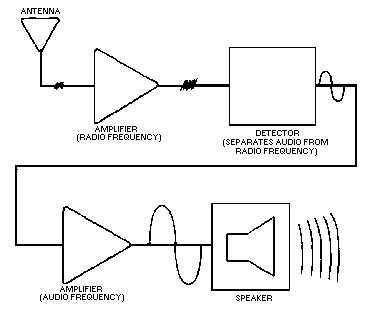1-30
Q-30. What is one use for a splitter?
Q-31. What is a common use for a push-pull amplifier?
Q-32. What is the advantage of a push-pull amplifier?
Q-33. What class of operation can be used with a push-pull amplifier to provide good fidelity output
signals?
SUMMARY
This chapter has presented some general information that applies to all amplifiers, as well as some
specific information about transistor and audio amplifiers. All of this information will be useful to you in
the next chapter of this module and in your future studies of electronics.
An AMPLIFIER is a device that enables an input signal to control an output signal. The output
signal will have some (or all) of the characteristics of the input signal but will generally be larger than the
input signal in terms of voltage, current, or power. A basic line diagram of an amplifier is shown below.
Amplifiers are classified by FUNCTION and FREQUENCY RESPONSE. Function refers to an
amplifier being a VOLTAGE AMPLIFIER or a POWER AMPLIFIER. Voltage amplifiers provide
voltage amplification and power amplifiers provide power amplification. The frequency response of an
amplifier can be described by classifying the amplifier as an AUDIO AMPLIFIER, RF AMPLIFIER, or
VIDEO (WIDE-BAND) AMPLIFIER. Audio amplifiers have frequency response in the range of 15 Hz to
20 kHz. An rf amplifier has a frequency response in the range of 10 kHz to 100,000 MHz. A video
(wide-band) amplifier has a frequency response of 10 Hz to 6 MHz.

